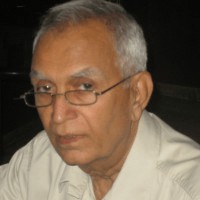A Study in Themodynamics - For the love of thermodynamics
It should serve well for any person fascinated (or may be in love) with Thermodynamics/Physics. Let us discuss ideas/opinions. Do not be bothered to outrightly dismiss any of my ideas either.
Member • Sep 11, 2014
Member • Sep 11, 2014
Member • Sep 11, 2014
Well, when the temperature of the gas and the metal bar is the same, the process would stop. You got that part correct.Geredd Hayesi would think that the force of the gas stops the metal from expanding. When the metal and gas are at the same temperature, they would both be under the same pressure.
Member • Sep 12, 2014
Member • Sep 13, 2014
Well, you are so correct there. The process should stop when the energy required for expansion should equal the heat transferred. This ofcourse has to be a process where lesser and lesser quantum of heat is successively transferred to the bar at each time step.Geredd Hayesthe energy that it takes for the expanding metal to push the gas is more than the heat energy that is transferred to it from the gas

Member • Sep 29, 2014
Member • Sep 29, 2014
Sir, agreed. But under what conditions the system comes to an equilibrium, that is the question here (although it should be extremely simple for you). It might serve as a good exercise for the newly introduced mind, of course a seasoned engineer like you can crack it in a second 😀A.V.RamaniI love thermodynamics as well. It is the bread and butter of ChemEs.
A closed multi-component system consists of various masses with various specific heats. The total thermal mass is the sum of the products of each mass and its specific heat.
When a quantity of heat Q is added to the system either in one shot or continuously, the temperature rise is given by:
(Delta T) = Q/(Sum(m1Cp1+m2Cp2+.......mnCpn)
That is all.

Member • Sep 29, 2014
Member • Sep 29, 2014
Sure the temperature would fall on the gas. But having the other material as a metal with a very high Coefficient of Thermal expansion is what makes it tricky. The metal wants to expand now, thus compressing the gas and raising its temperature further.A.V.RamaniEven assuming that the entire heat was transferred to the gas initially, as soon as it tries to heat the metal its temperature starts to fall. The second law ensures that the receiving object will always be at a temperature lower than the giving object.
Try replacing the metal by another gas and separating the two by a super elastic membrane and consider what would happen. The ideal gas law will result in just a pressure increase given by (delta P) = n x R x (delta T) the delta T itself given by the equation in my earlier post.

Member • Sep 29, 2014
Thermodynamics is quantitative. gases have the highest thermal expansion coefficient. Please think through your problem using two gases (the worst case).Shashank MogheSure the temperature would fall on the gas. But having the other material as a metal with a very high Coefficient of Thermal expansion is what makes it tricky. The metal wants to expand now, thus compressing the gas and raising its temperature further.
Member • Sep 29, 2014

Member • Sep 29, 2014
Member • Sep 29, 2014

Member • Sep 29, 2014
Member • Sep 30, 2014